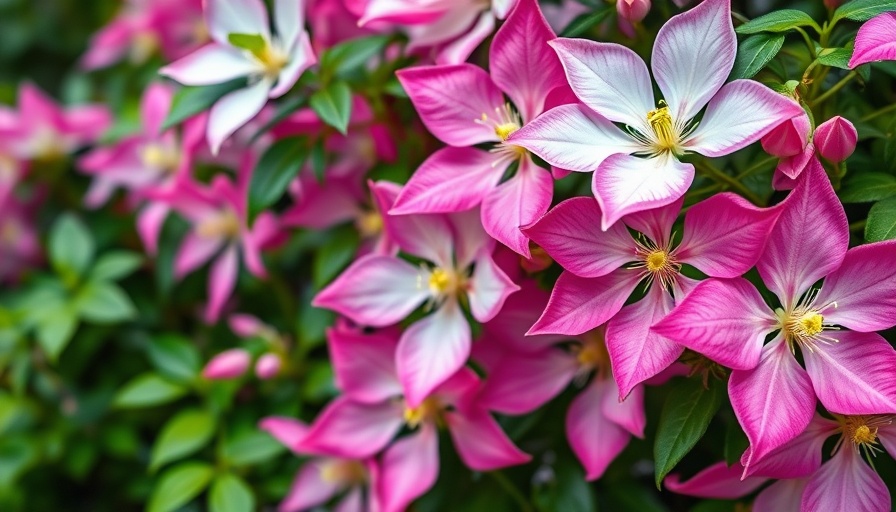
Understanding the Timeless Charm of Clematis Vines
For gardening enthusiasts, few plants boast the grandeur and diversity of the clematis genus. These remarkable flowering vines have captured the hearts of urban and suburban gardeners alike, creating stunning displays across fences, pergolas, and walls. With over 300 species and many hybrids, clematis provides an enticing range of colors and blooming characteristics, promising to add charm to any garden space.
Diverse Types and Their Unique Traits
The beauty of clematis lies not only in their flowers but also in their varied growth habits. From the expansive, woody structures of species like C. jackmanii to the delicate, herbaceous varieties such as C. integrifolia, there is a clematis for every gardener. Understanding the different types is essential for optimal care and flowering, so let’s explore these classifications.
Clematis Classification Groups: A Quick Guide
Clematis varieties are often divided into several classification groups, primarily based on bloom time and growth characteristics. These classifications offer vital insight into how and when to prune your vines for the best floral output:
- Evergreen: Retaining foliage through the winter in mild climates.
- Alpine: Smaller types suited for rocky gardens.
- Large-Flowered Groups: Early and late bloomers that showcase substantial, showy flowers.
- Herbaceous: Dies back in winter, perfect for those wanting to simplify garden upkeep.
- Ground Cover: Ideal for filling in spaces and preventing weeds.
This classification is crucial as it directly impacts pruning practices and bloom timing. For instance, spring bloomers need pruning right after they flower, while summer bloomers are often best pruned in early spring before growth begins.
Making the Most of Your Clematis
To fully enjoy the flourishing beauty of your clematis, you must provide the right conditions. These vines thrive with cool roots and sunlit foliage, so horticulturists recommend planting them in well-drained soil and allowing their roots a bit of shade while keeping their flowers basking in sunlight. This simple approach opens the door to proud displays of dazzling blooms, invigorating life in your garden space.
Common Questions About Growing Clematis
Many newcomers to clematis gardening have questions about care and maintenance. Key considerations include:
- How do I identify my clematis type? Consider both the bloom time and the growth habit. Document the characteristics of your vine, and refer to a guide or your local nursery for assistance.
- What are the best practices for pruning? After identifying your plant group, follow the guidelines for your specific type. This knowledge can reduce errors that lead to disappointing blooms.
- Are clematis vines pest-resistant? Generally, clematis are quite robust and can withstand many pests. However, regular inspection and careful maintenance can prevent potential infestations.
A Final Thought on Growing Clematis
While growing clematis may seem daunting at first, the rewards of these beautiful vines are well worth the effort. As you explore the various choices and care practices, you may discover not only a stunning floral display but also a personally enriching gardening experience. Whether it becomes a centerpiece in your backyard or a flowering tapestry on a trellis, sharing your success is a wonderful way to connect with fellow gardeners.
Call-to-Action: Grow Your Garden with Clematis
If you're excited to incorporate clematis into your garden, begin your journey today. Identify the types that resonate with you and transform your outdoor living space with the vibrant blooms of these exquisite vines. Embrace your gardening endeavors with clematis and empower your self-sufficiency through beautiful blooms!
 Add Row
Add Row  Add
Add 




 Add Row
Add Row  Add
Add 

Write A Comment